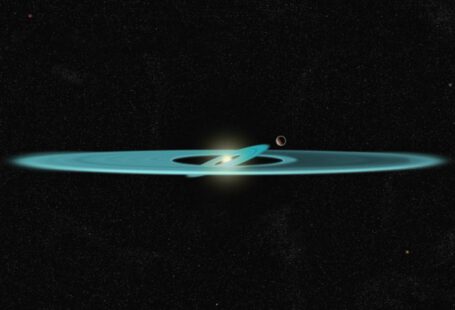For years, scientists have been fascinated by the possibility of finding life beyond Earth. While much attention has been given to the search for extraterrestrial life on Mars, a recent discovery has brought a surprising contender into the spotlight: Venus. Long regarded as a hostile and inhospitable planet, Venus has now become the focus of intense scientific scrutiny. Could there be life on Venus? Let’s explore the evidence.
The Harsh Environment of Venus
Venus, often referred to as Earth’s “evil twin,” is a planet that has captured the imagination of scientists and astronomers alike. With its thick atmosphere composed mainly of carbon dioxide, temperatures reaching a scorching 900 degrees Fahrenheit, and atmospheric pressure 92 times higher than Earth’s, Venus is a seemingly inhospitable place for life as we know it.
However, recent observations and data have challenged this perception, leading scientists to reconsider the possibility of life on Venus.
The Discovery of Phosphine
In September 2020, astronomers published a groundbreaking study in the journal Nature Astronomy, announcing the discovery of phosphine gas in Venus’ atmosphere. Phosphine is a molecule made up of one phosphorus atom and three hydrogen atoms, and on Earth, it is primarily associated with biological activity. Its presence in the Venusian atmosphere raised intriguing questions about the possibility of life on this seemingly hostile planet.
The Search for an Explanation
Since the discovery of phosphine, scientists have been working tirelessly to find an explanation for its presence on Venus. One possibility could be that it is produced by volcanic activity, as has been observed on Earth. Another hypothesis is that it is the result of chemical reactions involving minerals on the planet’s surface. However, both of these explanations have been met with skepticism, as they do not fully account for the observed levels of phosphine.
The most exciting and controversial explanation put forward is the idea that phosphine could be produced by living organisms. On Earth, phosphine is associated with anaerobic bacteria, which thrive in oxygen-deprived environments. If a similar type of life exists on Venus, it would revolutionize our understanding of the conditions necessary for life to survive and thrive.
The Challenges of Life on Venus
While the discovery of phosphine has raised the possibility of life on Venus, it is important to note the challenges that organisms would face in this environment. The extreme temperatures, extreme pressure, and acidic conditions pose significant obstacles to the survival of any known life forms.
However, some scientists believe that life on Venus, if it exists, could have adapted to these extreme conditions. It is possible that organisms have evolved unique biochemical mechanisms to withstand the harsh environment, using alternative solvents and energy sources. Such adaptations would be a profound discovery, expanding our understanding of the limits of life on other planets.
The Future of Exploration
The discovery of phosphine on Venus has reignited scientific interest in our neighboring planet. Several proposed missions, including NASA’s VERITAS and ESA’s EnVision, aim to study Venus in more detail, with the hope of uncovering further evidence of life. These missions will use advanced instruments to analyze the composition of Venus’ atmosphere and surface, providing valuable insights into its potential habitability.
Only time will tell whether life exists on Venus. But the discovery of phosphine has opened up a new realm of possibilities and has sparked a renewed sense of curiosity and exploration. As scientists continue to probe the mysteries of our solar system, the question of whether there is life on Venus remains tantalizingly unanswered.





